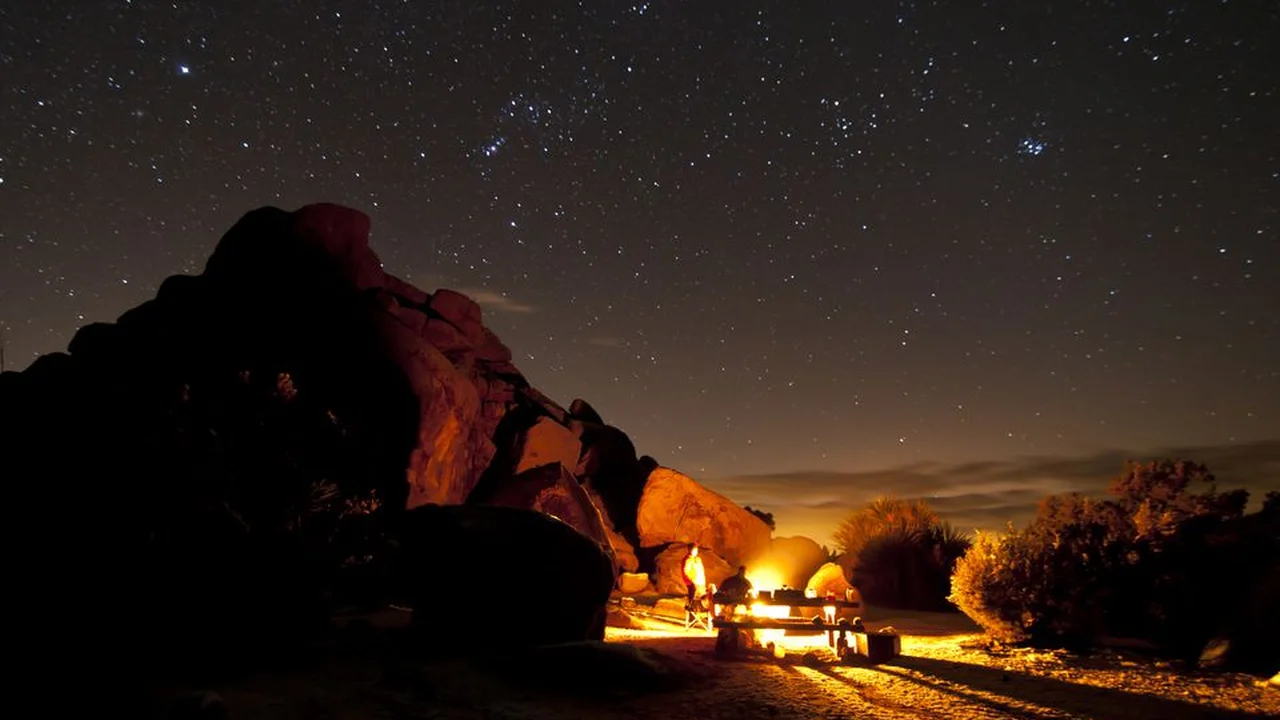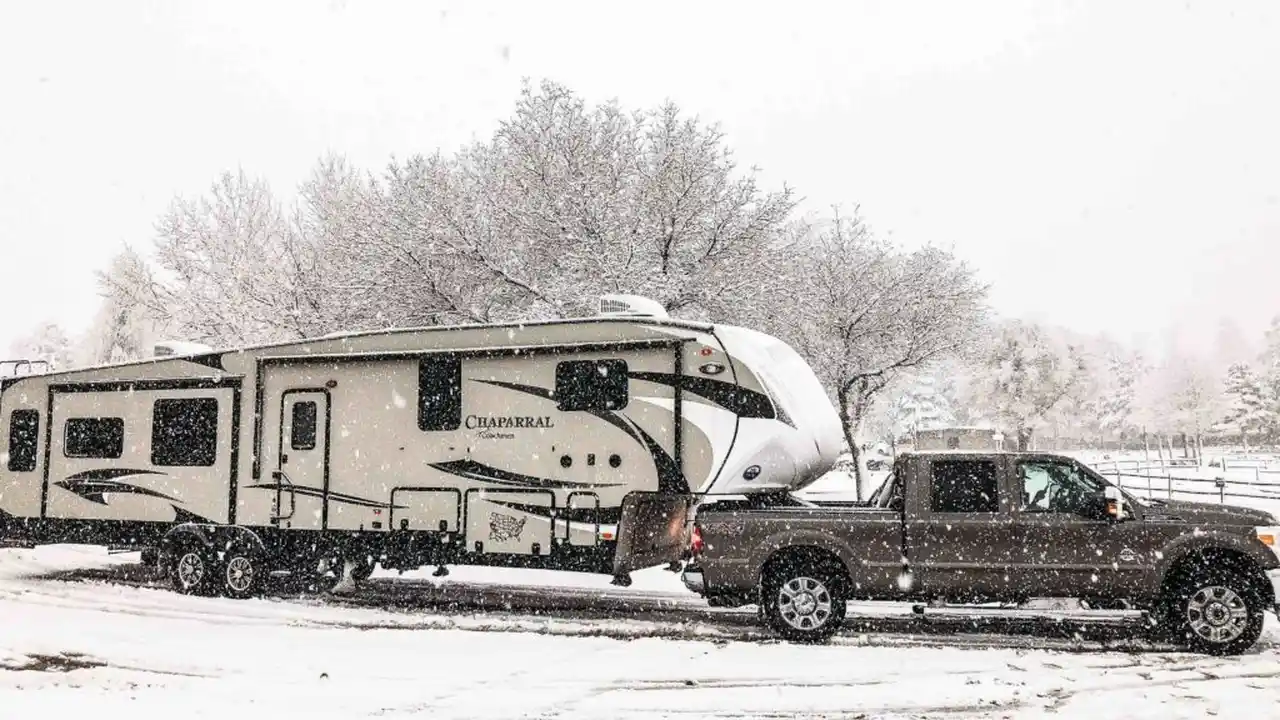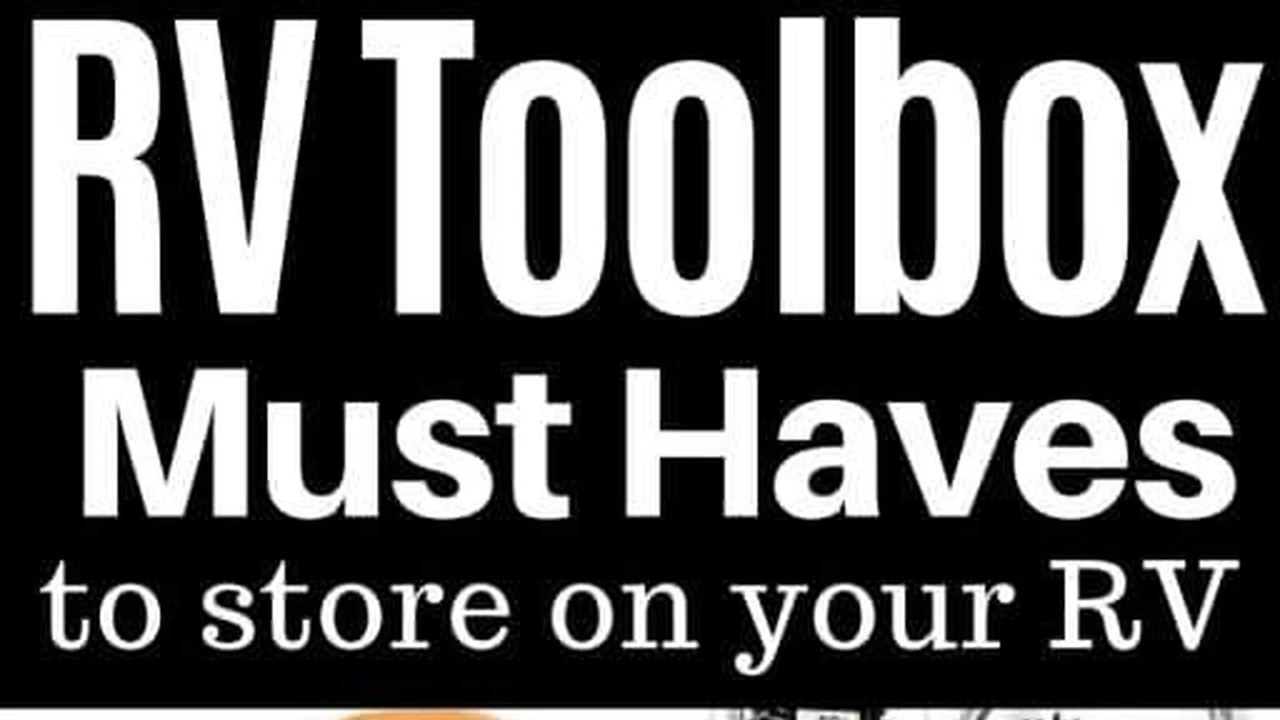California's Dark Sky Parks for RV Stargazers

Discovering California's Underrated Destinations
California, a land of sunshine, beaches, and Hollywood glamour, often overshadows its quieter, more secluded corners. Beyond the iconic landmarks and bustling cities lies a treasure trove of hidden gems waiting to be explored. These are the places where you can escape the crowds, reconnect with nature, and discover a different side of the Golden State. This article will delve into one such gem, but first, let's appreciate the broader allure of California's lesser-known destinations.
From the rugged coastline of Mendocino to the serene beauty of Death Valley, California offers a diverse range of experiences for the adventurous traveler. Imagine hiking through ancient redwood forests, kayaking in crystal-clear lakes, or stargazing under the darkest skies imaginable. These are the moments that create lasting memories and offer a true escape from the everyday.
But finding these hidden gems requires a little bit of effort. You won't find them on the typical tourist maps. You'll need to venture off the beaten path, explore local recommendations, and be open to the unexpected. The reward, however, is well worth the effort. You'll discover a side of California that most tourists never see – a side that is authentic, unspoiled, and utterly captivating.
Unveiling Secret California Getaways for the Discerning Traveler
For the discerning traveler seeking unique experiences, California offers a wealth of secret getaways. These are the places that cater to a more refined taste, offering luxurious accommodations, gourmet dining, and exclusive activities. Think boutique hotels nestled in wine country, secluded beaches with private access, and art galleries showcasing local talent.
One such getaway is the Post Ranch Inn in Big Sur. Perched high above the Pacific Ocean, this luxurious resort offers breathtaking views and unparalleled privacy. Each room is uniquely designed and features its own private deck, fireplace, and spa tub. Guests can enjoy gourmet meals prepared with locally sourced ingredients, indulge in spa treatments, or simply relax and soak in the stunning scenery.
Another hidden gem is the town of Ojai, located in the mountains north of Los Angeles. This charming town is known for its spiritual energy, art galleries, and organic farms. Visitors can take yoga classes, explore the local vineyards, or hike in the surrounding mountains. Ojai also boasts a number of excellent restaurants serving farm-to-table cuisine.
These secret getaways offer a chance to escape the hustle and bustle of everyday life and reconnect with yourself and your surroundings. They are perfect for those seeking a luxurious and unforgettable experience.
Exploring California's Dark Sky Parks for Unforgettable RV Stargazing
California's vast landscapes offer more than just stunning scenery; they also provide access to some of the darkest skies in the country. This makes the state a prime destination for stargazers, especially those who enjoy the comfort and convenience of RV travel. Several designated Dark Sky Parks across California offer exceptional opportunities to observe the celestial wonders, free from light pollution.
These parks are specifically protected to minimize artificial light, allowing visitors to see the Milky Way, constellations, and even distant galaxies with incredible clarity. RV stargazing in these locations combines the adventure of camping with the awe-inspiring experience of witnessing the night sky in its full glory.
Let's delve into some of California's best Dark Sky Parks for RV stargazers, along with essential tips and equipment recommendations to enhance your celestial adventure.
Anza-Borrego Desert State Park: A Stargazer's Paradise
Anza-Borrego Desert State Park, located in Southern California, is the largest state park in California and a designated International Dark Sky Park. Its vast, arid landscape and minimal light pollution make it an ideal location for stargazing. The park offers numerous campgrounds suitable for RVs, allowing you to set up your base camp and enjoy the celestial show right from your doorstep.
During the new moon, the Milky Way stretches across the sky like a river of stars. You can easily spot constellations like Orion, Ursa Major, and Cassiopeia. With a telescope or binoculars, you might even catch a glimpse of distant nebulae and galaxies.
RV Stargazing Tips for Anza-Borrego:
* **Check the moon phase:** Plan your trip around the new moon for the darkest skies. * **Bring a red flashlight:** Red light preserves your night vision. * **Download a stargazing app:** These apps can help you identify constellations and planets. * **Dress warmly:** The desert can get cold at night, even in summer. * **Bring insect repellent:** Mosquitoes and other insects can be active at night. * **Consider a portable generator:** While you'll want to minimize light, a generator can power essential appliances.Death Valley National Park: Where Darkness Reigns Supreme
Death Valley National Park, known for its extreme temperatures and stark beauty, is also one of the darkest places in the United States. Designated as an International Dark Sky Park, Death Valley offers unparalleled stargazing opportunities. The park's remote location and minimal light pollution create a truly awe-inspiring experience.
Imagine standing in the middle of the desert, surrounded by towering mountains, and gazing up at a sky filled with countless stars. The Milky Way appears as a brilliant band of light, and the constellations seem to jump out at you. Death Valley is a place where you can truly appreciate the vastness and wonder of the universe.
RV Stargazing Tips for Death Valley:
* **Be prepared for extreme temperatures:** Death Valley can be scorching hot during the day and surprisingly cold at night. * **Bring plenty of water:** Staying hydrated is crucial in the desert. * **Check your RV's cooling system:** Make sure your RV's air conditioner is working properly. * **Inform someone of your plans:** Let someone know where you're going and when you expect to return. * **Watch out for wildlife:** Scorpions, snakes, and other desert creatures are active at night. * **Consider bringing a star chart:** A physical star chart can be helpful in navigating the night sky.Lassen Volcanic National Park: Stargazing Amidst Volcanic Wonders
Lassen Volcanic National Park, located in Northern California, offers a unique combination of volcanic landscapes and dark skies. This park, still less crowded than other California parks, provides excellent stargazing opportunities amidst geothermal features and lush forests. The high elevation and remote location contribute to the park's dark skies.
Imagine stargazing near bubbling mud pots and steaming fumaroles. The contrast between the earthly volcanic activity and the celestial wonders creates a truly surreal experience. Lassen Volcanic National Park is a place where you can connect with both the Earth and the cosmos.
RV Stargazing Tips for Lassen Volcanic:
* **Be aware of altitude sickness:** Lassen Volcanic National Park is located at a high elevation. * **Check the weather forecast:** The weather in the mountains can be unpredictable. * **Bring layers of clothing:** Temperatures can fluctuate throughout the day and night. * **Watch out for wildlife:** Bears and other animals are common in the park. * **Take advantage of ranger programs:** Park rangers offer guided stargazing tours and educational programs. * **Consider a power inverter:** A power inverter can allow you to use your RV's battery to power small electronic devices.Essential RV Stargazing Equipment for an Enhanced Experience
Having the right equipment can significantly enhance your RV stargazing experience. Here's a breakdown of essential gear, along with product recommendations and pricing information:
Telescopes: Unveiling the Deep Sky
A telescope is the most important piece of equipment for serious stargazers. It allows you to see details that are invisible to the naked eye, such as the rings of Saturn, the moons of Jupiter, and distant galaxies.
* **Orion SkyQuest XT8 Classic Dobsonian Telescope:** This is a popular choice for beginners due to its ease of use and large aperture. The 8-inch aperture gathers plenty of light, allowing you to see faint objects in the night sky. **Price: Approximately $450 - $550.** * **Use Case:** Ideal for viewing planets, nebulae, and galaxies. Easy to set up and use, making it great for beginners. * **Comparison:** Compared to smaller telescopes, the XT8 offers significantly better light-gathering ability. Compared to larger telescopes, it's more portable and affordable. * **Details:** 8-inch aperture, Dobsonian mount, easy to collimate, comes with a 25mm eyepiece. * **Celestron NexStar 6SE Telescope:** This computerized telescope automatically locates celestial objects. It's a great option for those who want to quickly find specific planets or galaxies. **Price: Approximately $800 - $900.** * **Use Case:** Perfect for users who want a guided tour of the night sky. The computerized system makes it easy to find and track objects. * **Comparison:** Compared to manual telescopes, the NexStar 6SE is much easier to use. Compared to larger computerized telescopes, it's more portable and affordable. * **Details:** 6-inch aperture, Schmidt-Cassegrain optical design, computerized GoTo system, comes with a database of over 40,000 objects.Binoculars: Wide-Field Views of the Night Sky
Binoculars are a versatile tool for stargazing. They offer a wider field of view than telescopes, making them ideal for scanning the Milky Way and observing large constellations. They are also more portable and easier to use than telescopes.
* **Celestron SkyMaster 15x70 Binoculars:** These binoculars offer a good balance of magnification and light-gathering ability. They are ideal for observing the Milky Way, star clusters, and nebulae. **Price: Approximately $80 - $100.** * **Use Case:** Ideal for scanning the Milky Way and observing large constellations. Good for beginners who want an affordable and easy-to-use option. * **Comparison:** Compared to smaller binoculars, the 15x70 offers better light-gathering ability. Compared to larger binoculars, it's more portable and easier to hold steady. * **Details:** 15x magnification, 70mm objective lenses, multi-coated optics, tripod adapter included. * **Nikon Aculon A211 10x50 Binoculars:** These binoculars are a popular choice for all-around use, including stargazing. They offer a bright and clear image, and they are relatively lightweight. **Price: Approximately $100 - $120.** * **Use Case:** A versatile option for stargazing, birdwatching, and other outdoor activities. Provides a bright and clear image. * **Comparison:** Compared to higher-magnification binoculars, the 10x50 is easier to hold steady. Compared to smaller binoculars, it offers better light-gathering ability. * **Details:** 10x magnification, 50mm objective lenses, multi-coated optics, rubber-armored body.Star Charts and Apps: Navigating the Celestial Sphere
Star charts and apps are essential for identifying constellations, planets, and other celestial objects. They can help you learn your way around the night sky and find specific objects of interest.
* **Star Walk 2 (App):** This augmented reality app overlays constellations and planets onto your view of the night sky. It's a fun and interactive way to learn about astronomy. **Price: Free (with in-app purchases).** * **Use Case:** A fun and interactive way to learn about astronomy. Easy to use and provides a wealth of information. * **Comparison:** Compared to traditional star charts, Star Walk 2 is much more interactive and user-friendly. * **Details:** Augmented reality overlay, constellation identification, planet tracking, information about celestial objects. * **SkySafari (App):** This is a more advanced stargazing app that offers a wealth of features, including a detailed database of celestial objects, telescope control, and observing planning tools. **Price: Approximately $3 - $40 (depending on version).** * **Use Case:** A powerful tool for serious stargazers. Offers a wealth of features for observing and planning. * **Comparison:** Compared to Star Walk 2, SkySafari is more advanced and offers more features. * **Details:** Detailed database of celestial objects, telescope control, observing planning tools, customizable display. * **National Audubon Society Field Guide to the Night Sky:** This comprehensive field guide provides detailed information about constellations, planets, and other celestial objects. It's a great resource for learning about astronomy and identifying objects in the night sky. **Price: Approximately $20 - $25.** * **Use Case:** A comprehensive reference guide for learning about astronomy and identifying objects in the night sky. * **Comparison:** Compared to apps, a field guide provides a more tangible and detailed source of information. * **Details:** Detailed information about constellations, planets, and other celestial objects, star charts, photographs, and illustrations.Red Flashlight: Preserving Your Night Vision
White light can ruin your night vision in seconds. A red flashlight preserves your night vision, allowing you to see star charts and equipment without affecting your ability to see the stars.
* **Carson RedSight Red LED Flashlight:** This compact and affordable red flashlight is perfect for stargazing. It features a bright red LED and a comfortable grip. **Price: Approximately $10 - $15.** * **Use Case:** Essential for preserving night vision while stargazing. * **Comparison:** Compared to white flashlights, a red flashlight doesn't affect your ability to see the stars. * **Details:** Red LED, compact design, comfortable grip.Comfort and Convenience: Making the Most of Your RV Stargazing Trip
Beyond the essential equipment, consider these items for a more comfortable and convenient RV stargazing experience:
* **Comfortable Chairs:** Lounging under the stars requires comfortable seating. Consider bringing folding chairs or a portable hammock. * **Warm Blankets:** Even in warm climates, temperatures can drop significantly at night. Pack warm blankets to stay comfortable. * **Hot Beverage Thermos:** A thermos filled with hot coffee, tea, or hot chocolate can be a welcome treat on a cold night. * **Snacks:** Pack some snacks to keep your energy levels up during your stargazing session. * **Insect Repellent:** Mosquitoes and other insects can be a nuisance, especially in warmer climates. * **Leveling Blocks:** Ensure your RV is level for comfortable sleeping and cooking. * **Generator (Optional):** A generator can provide power for essential appliances, but be mindful of noise and light pollution. * **Power Inverter:** A power inverter can allow you to use your RV's battery to power small electronic devices.Comparing RV Stargazing Products: A Detailed Analysis
Choosing the right equipment for RV stargazing can be overwhelming. Here's a detailed comparison of some of the products mentioned above, focusing on key features, benefits, and drawbacks:
Telescope Comparison: Orion SkyQuest XT8 vs. Celestron NexStar 6SE
| Feature | Orion SkyQuest XT8 Classic | Celestron NexStar 6SE | | ---------------- | -------------------------- | -------------------------- | | Aperture | 8 inches | 6 inches | | Mount | Dobsonian | Computerized Alt-Azimuth | | Ease of Use | Very Easy | Moderate | | Portability | Moderate | Moderate | | Object Location | Manual | Automatic (GoTo) | | Price | $450 - $550 | $800 - $900 | | Best For | Deep-sky viewing | Planetary viewing, ease of use | | Drawbacks | Requires manual object location | More expensive |Analysis: The Orion SkyQuest XT8 is a great choice for beginners who want a large aperture telescope for deep-sky viewing. The Dobsonian mount is simple to use, but requires manual object location. The Celestron NexStar 6SE is a more advanced telescope with a computerized GoTo system that automatically locates celestial objects. However, it's more expensive and has a smaller aperture.
Binocular Comparison: Celestron SkyMaster 15x70 vs. Nikon Aculon A211 10x50
| Feature | Celestron SkyMaster 15x70 | Nikon Aculon A211 10x50 | | ---------------- | -------------------------- | -------------------------- | | Magnification | 15x | 10x | | Objective Lens | 70mm | 50mm | | Brightness | High | Moderate | | Field of View | Narrow | Wide | | Portability | Moderate | High | | Price | $80 - $100 | $100 - $120 | | Best For | Milky Way viewing | All-around use | | Drawbacks | Requires tripod for stability | Less light gathering |Analysis: The Celestron SkyMaster 15x70 is a great choice for observing the Milky Way and other faint objects. The large objective lenses gather plenty of light, but the high magnification requires a tripod for stability. The Nikon Aculon A211 10x50 is a more versatile binocular that can be used for a variety of activities, including stargazing. The lower magnification and wider field of view make it easier to hold steady, but it doesn't gather as much light as the SkyMaster.
App Comparison: Star Walk 2 vs. SkySafari
| Feature | Star Walk 2 | SkySafari | | ---------------- | -------------------------- | -------------------------- | | Ease of Use | Very Easy | Moderate | | Features | Augmented Reality, Basic Info | Detailed Database, Telescope Control | | Price | Free (with in-app purchases) | $3 - $40 (depending on version) | | Best For | Beginners, Casual Observers | Serious Stargazers | | Drawbacks | Limited Features | Can be overwhelming for beginners |Analysis: Star Walk 2 is a great choice for beginners who want a fun and interactive way to learn about astronomy. The augmented reality feature is engaging and easy to use. SkySafari is a more powerful app that offers a wealth of features for serious stargazers. However, it can be overwhelming for beginners.
Elevating Your RV Stargazing Experience: Advanced Techniques and Tips
Once you've mastered the basics of RV stargazing, you can explore more advanced techniques to further enhance your experience:
* **Astrophotography:** Capture stunning images of the night sky using your telescope or camera. This requires specialized equipment and techniques, but the results can be breathtaking. * **Dark Sky Etiquette:** Be mindful of light and noise pollution when stargazing in Dark Sky Parks. Avoid using bright lights and keep noise levels to a minimum. * **Joining a Stargazing Club:** Connect with other stargazers in your area to share knowledge, tips, and observing experiences. * **Learning Constellation Stories:** Delve into the mythology and folklore surrounding the constellations. This can add a deeper appreciation for the night sky. * **Tracking Meteor Showers:** Plan your stargazing trips around meteor showers to witness a spectacular celestial display. * **Using Filters:** Light pollution filters can help to improve the visibility of faint objects in light-polluted areas.California's Hidden Gems: More Than Just Stargazing
While stargazing is a fantastic reason to explore California's hidden gems, these locations offer much more than just dark skies. They provide opportunities for hiking, camping, wildlife viewing, and connecting with nature.
Anza-Borrego Desert State Park, for example, is home to a diverse array of desert flora and fauna, including bighorn sheep, roadrunners, and cacti. Death Valley National Park boasts stunning geological formations, such as Badwater Basin (the lowest point in North America) and Zabriskie Point. Lassen Volcanic National Park features bubbling mud pots, steaming fumaroles, and pristine lakes.
By venturing off the beaten path and exploring these hidden gems, you can discover a different side of California – a side that is wild, beautiful, and truly unforgettable.
Planning Your RV Stargazing Trip to California
Planning your RV stargazing trip to California requires careful consideration of several factors, including the time of year, weather conditions, and campground availability.
* **Best Time of Year:** The best time for stargazing in California is during the fall and winter months, when the skies are typically clearer and the nights are longer. * **Weather Conditions:** Check the weather forecast before you go, and be prepared for extreme temperatures, especially in desert locations. * **Campground Reservations:** Book your campground reservations well in advance, especially during peak season. * **RV Maintenance:** Make sure your RV is in good working order before you embark on your trip. * **Emergency Supplies:** Pack essential emergency supplies, such as water, food, first-aid kit, and a communication device. * **Respect the Environment:** Leave no trace behind and respect the natural environment.By following these tips, you can ensure a safe and enjoyable RV stargazing trip to California.
Embrace the Darkness: Your California Stargazing Adventure Awaits
California's Dark Sky Parks offer a unique opportunity to escape the light pollution of urban areas and experience the beauty and wonder of the night sky. Whether you're a seasoned astronomer or a casual observer, RV stargazing in California is an adventure you won't soon forget.
So pack your bags, grab your telescope, and head out to one of California's hidden gems. The stars are waiting.
:max_bytes(150000):strip_icc()/277019-baked-pork-chops-with-cream-of-mushroom-soup-DDMFS-beauty-4x3-BG-7505-5762b731cf30447d9cbbbbbf387beafa.jpg)






